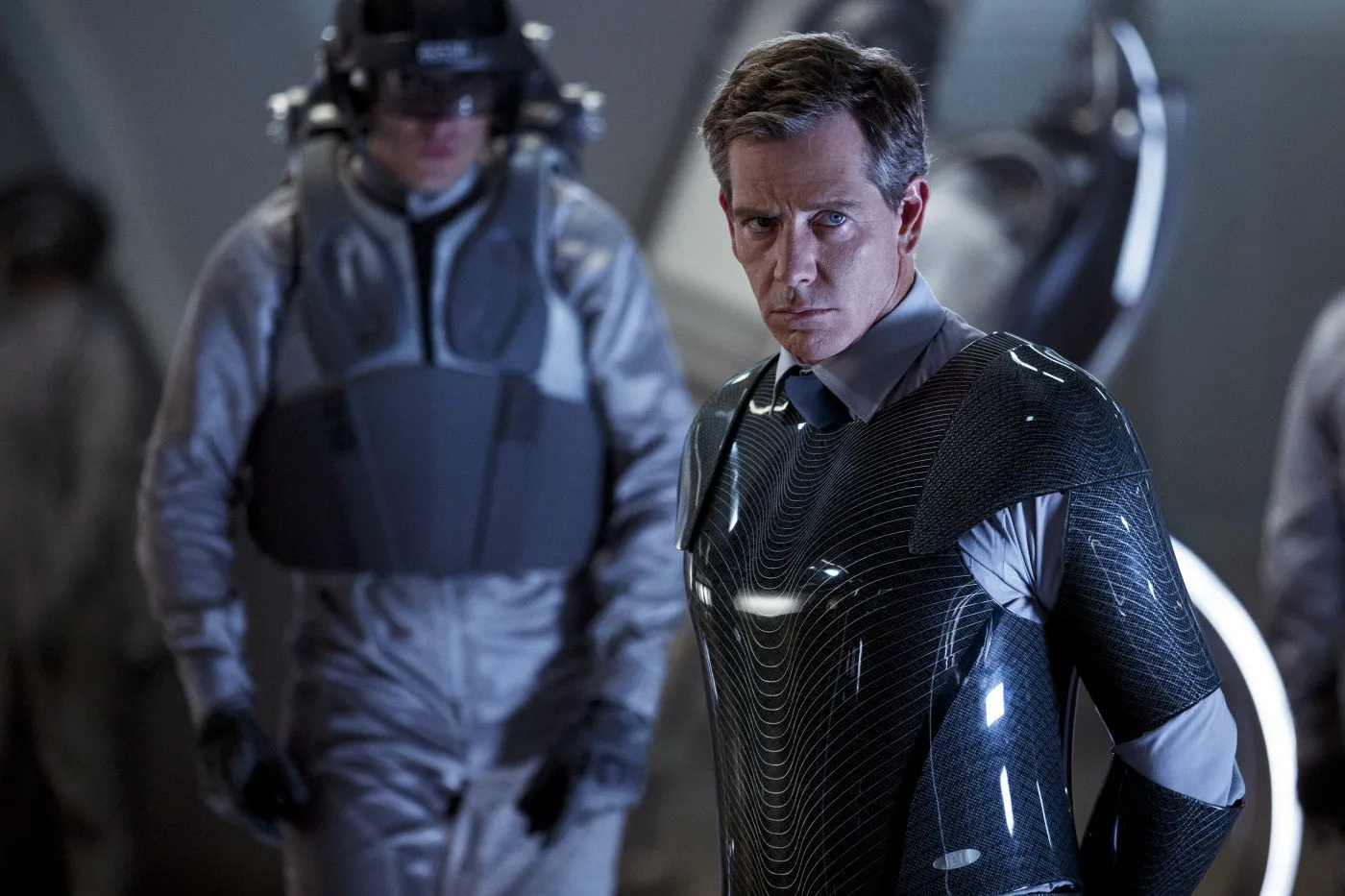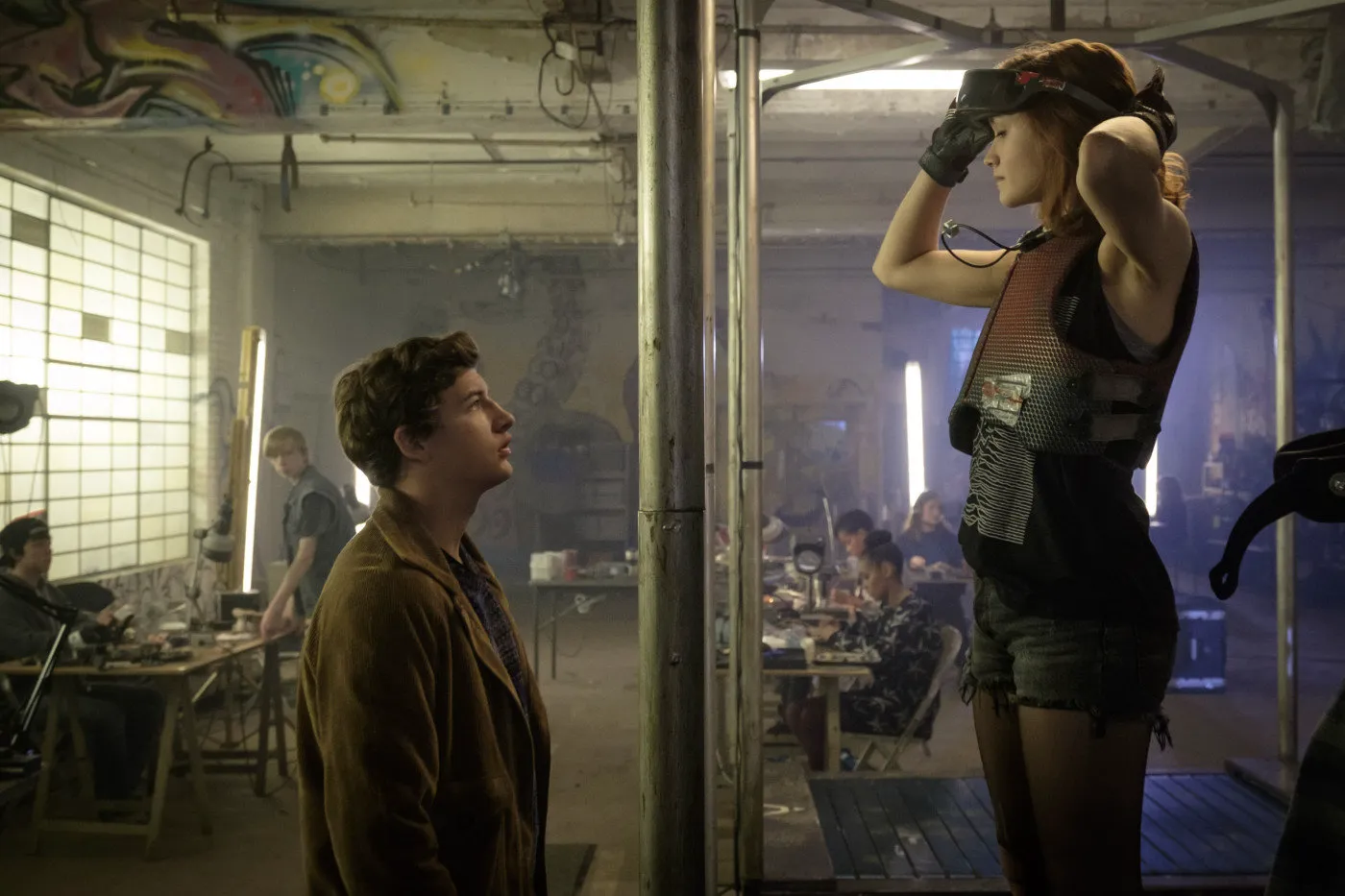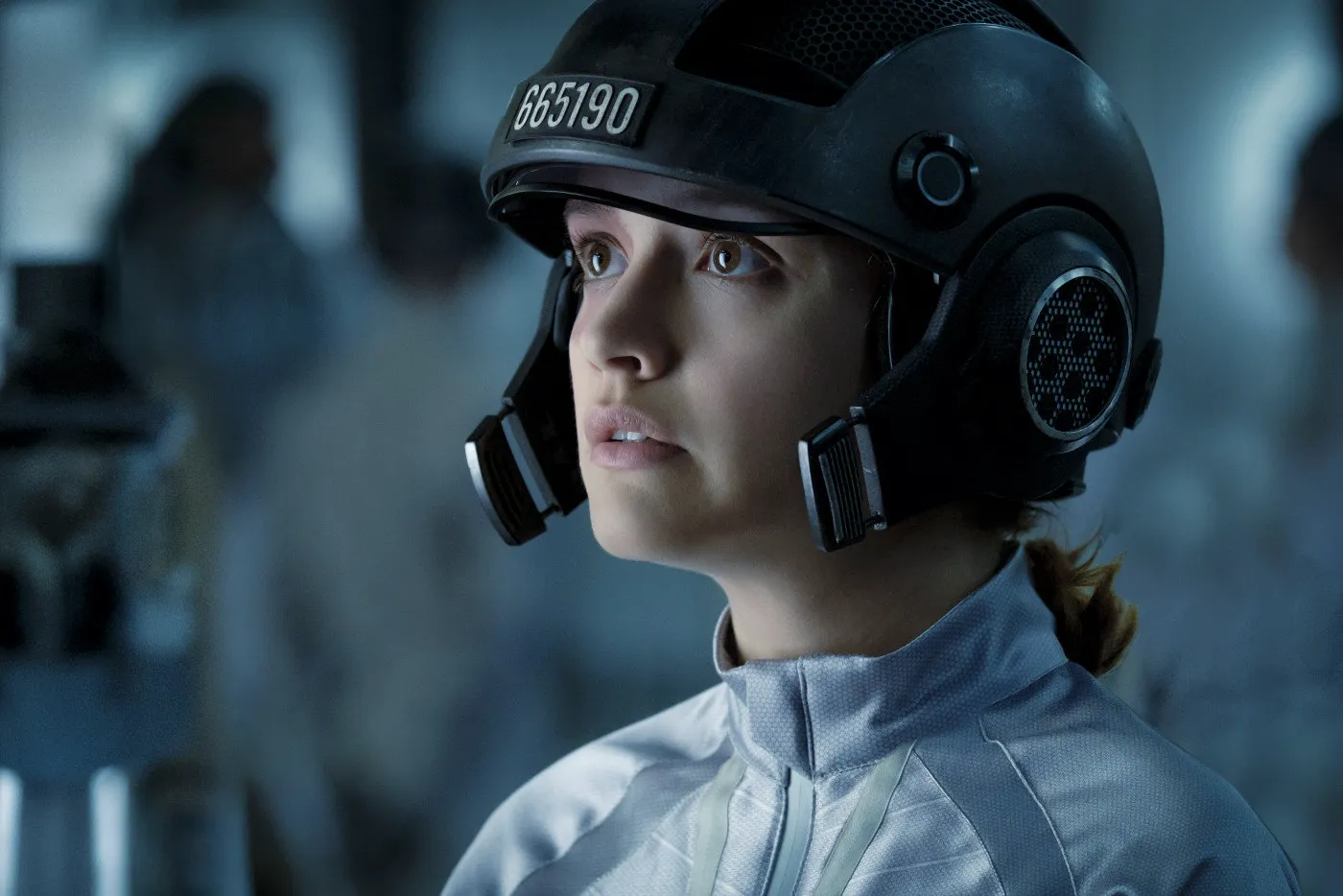A Primitive Yet Daring Fantasy Adventure in a Computer Game World, Overflowing with References to Western and Japanese Pop Culture.
In 2045, economic crises have brought America to such a state that most residents escape reality into the global video game OASIS, packed with references to pop culture from past decades. A few years earlier, the game’s creator, James Halliday, passed away, and it became known that his share in the company and control over OASIS would go to whoever collects three secret keys scattered throughout the game and finds the “easter egg” left by Halliday. Therefore, now not only ordinary gamers spend their days and nights in the game, but also corporate players, looking for keys for their bosses. One day, a teenage orphan Wade Watts (Tye Sheridan), who plays under the nickname “Parzival,” solves the riddle of the first key and, together with his friends, leads the ranking of “easter egg” hunters. This attracts the close attention of Nolan Sorrento (Ben Mendelsohn) – the unscrupulous head of the IOI corporation, which has long been trying to seize OASIS.

Out of modesty, Spielberg did not include references to the films he directed himself. His production projects appear in the film.
Want to see the Iron Giant fight Mechagodzilla? Steven Spielberg has made a blockbuster just for you! The grandiose, fantastically beautiful adaptation of Ernest Cline’s “geeky” novel of the same name, “Ready Player One,” is filled to the brim with characters and quotes from famous films, cartoons, video games, and comics.
Spielberg’s Mastery of Pop Culture
For Spielberg, there are no corporate barriers. He proved this when he gathered characters from all over Hollywood for “Who Framed Roger Rabbit.” Now, the maestro has confirmed his talent as a negotiator on a much larger scale. The cultural range of his new film ranges from King Kong to the fresh video hit Overwatch, and there are countless intermediate stops. It will only be possible to recognize them all when the film is released on video and can be studied frame by frame.

Of course, “Ready Player One” is not limited to a powerful stream of references and interpretations of classics. But if you subtract them, we will see an extremely naive and flat narrative that imitates an anti-corporate message, but in fact asserts that the best remedy against bad capitalists is even richer good capitalists. That is, people who are limited not by laws and norms, but by conscience and a sense of justice. It is clear what uber-capitalist Spielberg can say about predatory capitalism… He would be a hypocrite if he “attacked” the current social system in the most corporate film of all time.

Characters and Themes
The characters in the film are even more primitive than its ideas. “Ready Player One” is composed as a fairy tale for kids with a characteristic black-and-white division into impeccable “good guys” and insidious “bad guys.” The latter, however, are not dangerous or frightening, and the film is not watched as a tense thriller, but as a reckless semi-comic adventure, in which a significant proportion of the humor is jokes about Nolan and his henchmen. Ben Mendelsohn revels in the role of a corporate dandy who goes out of his way to appear smarter and cooler than he really is.

It was assumed that the main role would be played by an unknown newcomer, but after an unsuccessful all-American casting, Spielberg settled on the relatively well-known Tye Sheridan.
The young actors opposing Mendelsohn look pale against his background. However, this does not matter much, since the main action of the film takes place in virtual reality, and the screen mainly shows drawn avatars, which are much more entertaining than the artists voicing them. Unlike “The Matrix,” where virtual reality imitated the real world and only slightly distorted it in combat scenes, in “Ready Player One,” virtual reality proudly shows its computer nature at every step, allowing heroes to transform, use magical artifacts, fight with any weapon… And fly apart into game “loot” in case of death. Almost all of the OASIS space is a variety of video game levels, but there are also areas for communication, the James Halliday Museum, and a dance club with zero gravity.

A Nostalgic Adventure
The action of the film develops much faster than in the original book, and this is excellent, as it does not give time to think about plot blunders. In general, the childishness of the production is manifested in every aspect of it, although the picture is intended primarily for geeks with experience. It is unlikely that today’s kids will react violently to how Spielberg plays “The Shining” by Kubrick or the game Adventure for Atari 2600. But these are not momentary jokes, but key fragments of the film. Actually, if you have not seen “The Shining,” then you may not go to the cinema at all, because you will not understand what is happening in the middle of the film. This is the case when they ironically write: “A film for children from 8 to 80 years old.” That is, for an audience in which, regardless of passport age, the inner child is alive and well.
In Spielberg, this child has clearly not died yet, although the old man’s grumbling about how much time gamers spend in the game world is also evident in the film. The film insists that you need to get out of the game from time to time, but this is said by characters who have something to catch in the real world. For millions of poor people, the virtual world is clearly better, and the maestro fails to convince viewers otherwise. His team has invested too much effort and resources in a delightful parallel reality, where every kid can become a hero and wipe the nose of a tycoon, and where Halo players can fight in the same party with Street Fighter players.